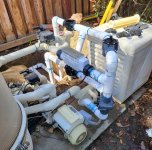- Dec 7, 2014
- 126
- Pool Size
- 20000
- Surface
- Plaster
- Chlorine
- Salt Water Generator
- SWG Type
- Pentair Intellichlor IC-40
My wife has been wanting solar pool heating for more than a decade, but our roof space is severely limited with PV panels occupying most of it.
During COVID we installed a free-standing insulated alumawood patio cover to give us an outdoor entertaining area.
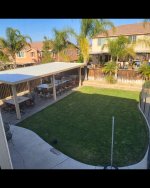
I then got several opinions on installing pool solar on this patio cover. I found a few companies that would do it, but they said I effectivity waved and warranty by putting the panels on a flat surface. While it doesn't freeze often in sunny SoCal, once it's enough to destroy pool solar panels that aren't drained. Without a slope to the roof, draining is difficult and involves forced air.
After some searching I got in touch with Ken Wright with H2ot Sun industries. While he is in Canada, Ecosolar out of Upland California distributes for him in the U.S.
Of particular interest to me was his ballasted flat roof system:

 www.h2otsun.com
www.h2otsun.com
My initial call to Ken confirmed that his system was exactly what I needed for the following reasons:
1) Ballasted system means no roof penetrations.
2) Elevated headers with flexible fin tubing means only the headers have to be drained for the winter. Water left in the flexible tubes is fine since they can expand without breaking.
3) Custom lengths means I could fill the entire surface instead of sticking to premade sizes.
4) Ken offers full support for DIY systems. He provided almost everything I needed to install the system and has a complete manual that walks through the installation step-by-step. Plus he designed the system with ballast placement and cross bars for uplift support. The heavier/longer parts of the ballasted system are purchased locally at The Home Depot.
I went with 15 1'x30' panels. The panels were premade for me.
Here are some snaps of the install from beginning to end:
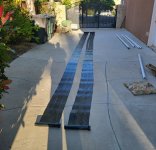
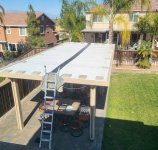
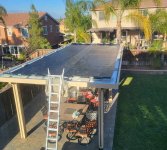
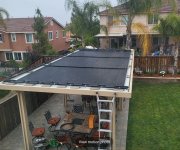
My pool was at 68' two weeks ago, and now with 450 square feet of h2ot sun pool heaters I am hitting 85' every day.
Overall Ken's customer support and DIY help aids are superb! Not to mention Austin in Upland's meticulous packaging of all the items.
I am quite pleased with the outcome. If you can plumb PVC sprinklers, you can plumb a pool solar system!
During COVID we installed a free-standing insulated alumawood patio cover to give us an outdoor entertaining area.

I then got several opinions on installing pool solar on this patio cover. I found a few companies that would do it, but they said I effectivity waved and warranty by putting the panels on a flat surface. While it doesn't freeze often in sunny SoCal, once it's enough to destroy pool solar panels that aren't drained. Without a slope to the roof, draining is difficult and involves forced air.
After some searching I got in touch with Ken Wright with H2ot Sun industries. While he is in Canada, Ecosolar out of Upland California distributes for him in the U.S.
Of particular interest to me was his ballasted flat roof system:

Solar Pool Heating on Flat Roofs- Ballasted
No roof penetrations are required to mount Powerstrip solar collectors on sensitive flat roof surfaces
 www.h2otsun.com
www.h2otsun.com
My initial call to Ken confirmed that his system was exactly what I needed for the following reasons:
1) Ballasted system means no roof penetrations.
2) Elevated headers with flexible fin tubing means only the headers have to be drained for the winter. Water left in the flexible tubes is fine since they can expand without breaking.
3) Custom lengths means I could fill the entire surface instead of sticking to premade sizes.
4) Ken offers full support for DIY systems. He provided almost everything I needed to install the system and has a complete manual that walks through the installation step-by-step. Plus he designed the system with ballast placement and cross bars for uplift support. The heavier/longer parts of the ballasted system are purchased locally at The Home Depot.
I went with 15 1'x30' panels. The panels were premade for me.
Here are some snaps of the install from beginning to end:




My pool was at 68' two weeks ago, and now with 450 square feet of h2ot sun pool heaters I am hitting 85' every day.
Overall Ken's customer support and DIY help aids are superb! Not to mention Austin in Upland's meticulous packaging of all the items.
I am quite pleased with the outcome. If you can plumb PVC sprinklers, you can plumb a pool solar system!
Last edited:


